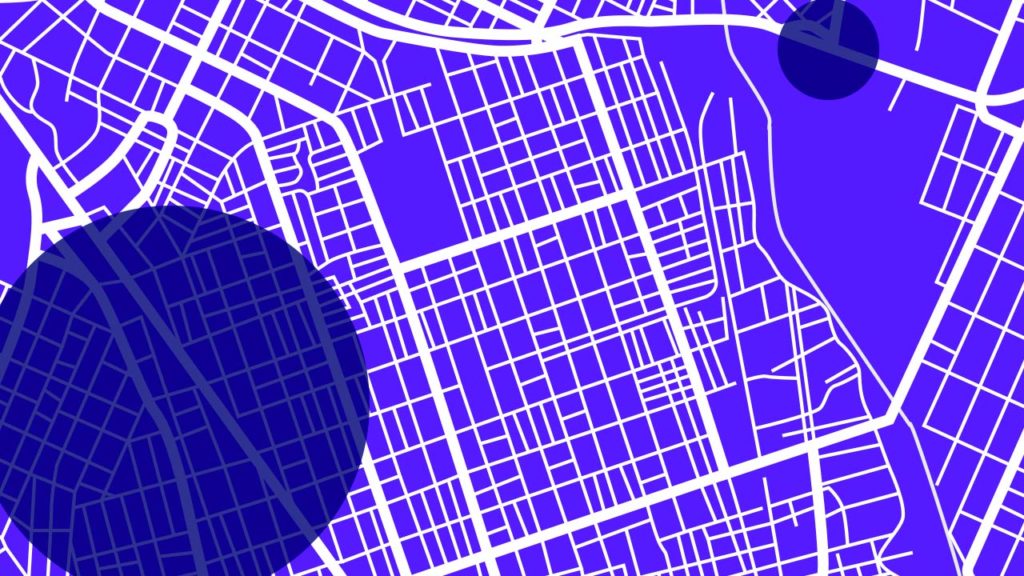Geofencing—a location-data service that creates a zone around a specific geographic area for the purpose of advertisement targeting, is a relatively new but powerful marketing tactic. Thanks to consumer demand for deals and personalization, and marketers’ desire to penetrate consumer’s smartphones, geofencing is increasing exponentially.
A Market Research Future report predicts the global geofencing market to grow to $2.2 billion by 2023.
Geofencing is found across all sectors, but travel, banking, retail and quick-service restaurants have jumped on the technology early and set the standard.
Let’s look at five examples of brands creating successful geofencing campaigns to attract shoppers and expand brand recognition.
HotelTonight Catches Users Location
HotelTonight is a great, basic example of using geofencing in a product. The company is famous for providing its app users with information about the best open accommodations. The service uses consumer’s cellular GPS data and delivers accurate, location-based content.
In the case study published by Fastly—a cloud computing platform—HotelTonight’s rails engineering lead, Harlow Ward, says of the company’s experience with location data intelligence, “There was a big unknown for us with the geofencing approach. We’d toyed with the idea of geofencing requests for some time. As with all new features on the platform we A/B tested it and the performance increase was astonishing.”
HotelTonight’s app is also equipped with two geo-discount features. The Rate Drop tool turns on after 3 pm, when the customer happens to be in a few miles away from a participating hotel. With Rate Drop the customer is getting an additional 10 to 40 percent discount on accommodation. Bonus Rate, the other feature, enables more remote users who require a larger budget to see deeper discount rates for a hotel than the users nearby.
Waze Pins 76 Gas Stations
Navigation app Waze is another simplistic example of geofencing. The company works with numerous leading brands, including Shell, McDonald’s, Adidas and AT&T to literally put them on the map using geofencing. Waze Ads’ service slogan says it all: “Location marketing, with context.”
With the help of Waze Ads, 76 fuel chain brought their marketing campaign, TANK5, to drivers in California by pinning their recognizable orange and blue logo to stations on the Waze map. The drivers were offered a limited-time, one in five chance to win money at the gas stations. As they were approaching a 76 gas station, a message promoting 76 stations popped-up.
Sephora Offers a Store Companion
Sephora’s “store companion” geofencing feature is also another example of a smart location-data solution. The companion turns on as soon as the customer walks into the store. It gives the customer access to information on their past purchases, product recommendations and reviews, limited-edition offers, wish-list product availability, as well as store experiences and happenings on that day. Using geofence technology, the Sephora app increases customer satisfaction and loyalty by creating excellent daily mobile content, including location-targeted messages. If a user has an unspent gift card, they can expect a reminder from the app when they enter the geofenced zone close to Sephora.
Dunkin’ Creates A Personalized Snapchat Geofilter
Dunkin’s use of a personalized Snapchat geo filter to celebrate National Donut Day is another successful example of geofencing marketing tactics. Snapchat filters allow brands to demonstrate their creative abilities and personalities, as well as provide the app users with cartoonish, sharable experiences.
Dunkin’s filter, which could only be accessed in-store or via the “Snap to Unlock” feature, turned the user’s head into a gigantic pink donut inhaling sprinkles. This campaign resulted in the company gaining 10 times more Snapchat followers on National Donut Day than their monthly average.
Burger King Trolls McDonald’s
And of course, the most recent and impressive example is Burger King’s “Whopper Detour,” which involved building a 600-feet fence around McDonald’s restaurants. Burger King encouraged its customers to go to McDonald’s, but with a twist. As soon as they entered the “fence,” they could unlock a deal for a one-cent Whopper burger on the Burger King app.
The risky promotion resulted in Burger King app being downloaded over 1,000,000 times and boosted from ninth to first place in the Apple App Store’s food and drink category.

